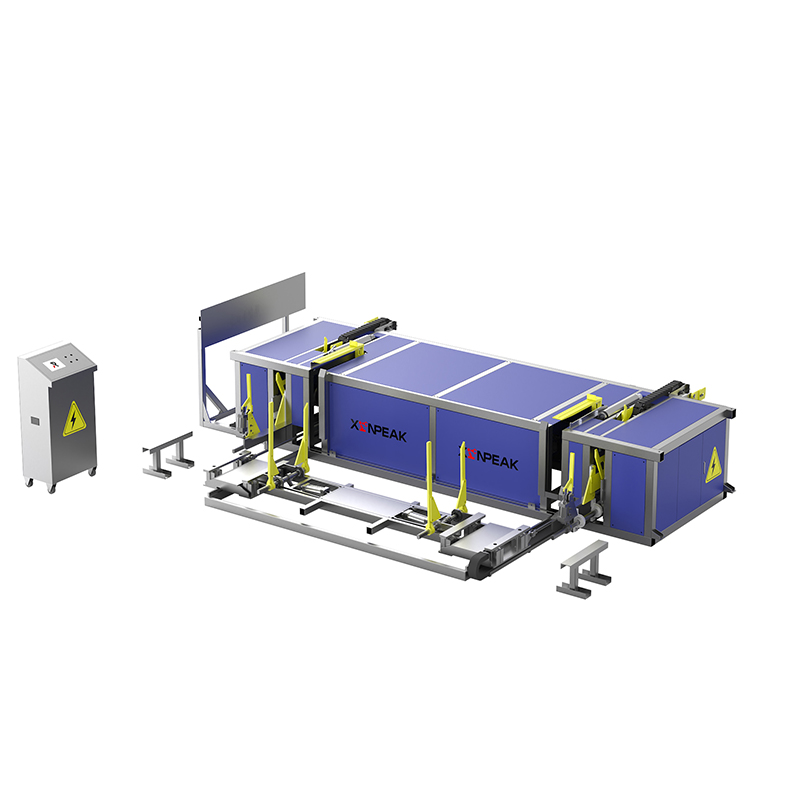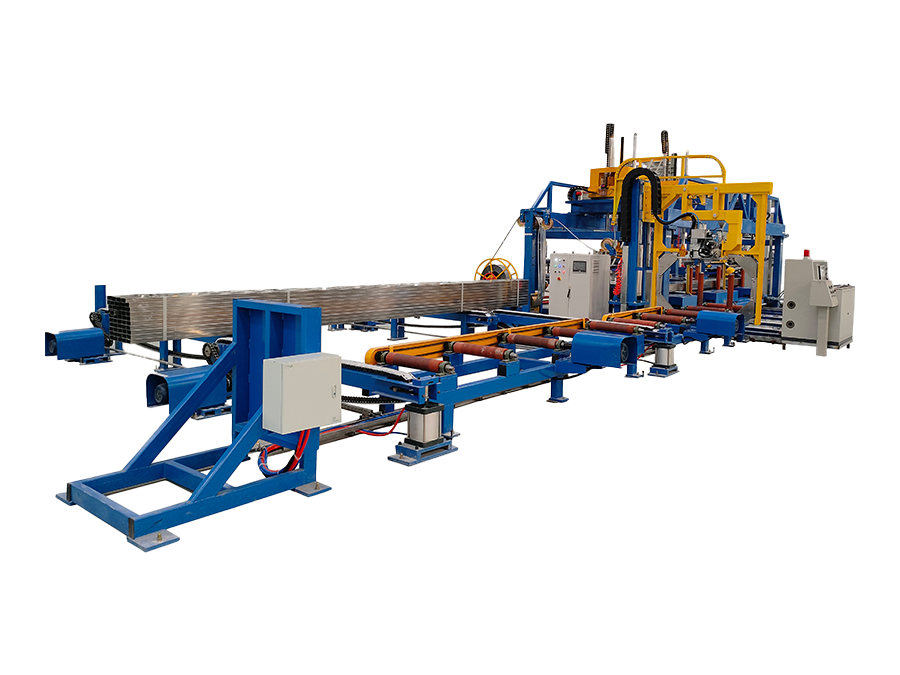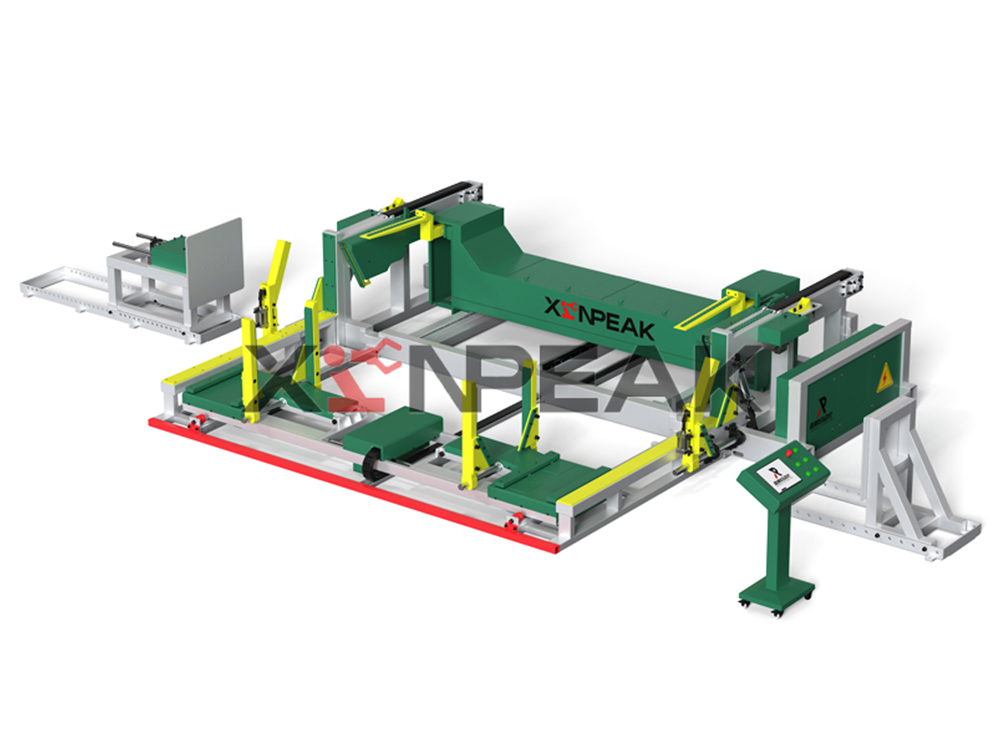Online
How can steel pipe manufacturers improve palletizing efficiency?
2025-08-13
Steel pipe manufacturers can improve palletizing efficiency through five key approaches: equipment optimization, process improvement, environmental management, personnel training, and technological innovation. Specific measures and analysis are provided below:
1. Equipment Optimization: Improving Hardware Performance and Intelligence
Using High-Performance Palletizing Robots
Select robotic arms with higher load capacity, speed, and acceleration. For example, use lightweight, high-strength materials (carbon fiber) to reduce weight and improve response speed.
Equipment with multi-jointed robots increases reach and flexibility, covers a wider palletizing area, and reduces movement time.
Case Study: After introducing a high-speed multi-jointed robot, a steel pipe plant increased palletizing speed by 30%, and can now handle steel pipes of varying specifications.
Integrating Intelligent Vision Systems
Using machine vision to identify the position, size, and posture of steel pipes enables precise grasping and positioning, eliminating manual adjustment errors.
Integrating deep learning algorithms optimizes grasping strategies to accommodate complex stacking scenarios (such as cross-palletizing or sequential palletizing).
Optimizing Drive and Control Systems
Using high-efficiency motors and reducers ensures smooth and precise movement of the robotic arm at high speeds. Upgrade the control system to support real-time dynamic adjustment of movement trajectories to accommodate temporary changes in the production line (such as changes in steel pipe specifications).
II. Process Improvement: Achieving Automation and Collaboration
Automated Process Design
Seamlessly integrate the palletizer with conveyor lines, balers, and strapping machines to form a continuous automated production line.
Case Study: A factory reduced wait time and improved overall efficiency by 25% by adjusting the case packer's rhythm to match the palletizer.
Intelligent Path Planning
Use algorithms to optimize the robot's movement path, reducing idle strokes and repetitive movements.
Integrate real-time data (such as steel pipe location and order requirements) to dynamically adjust the palletizing sequence, improving flexibility.
Goods-to-Person Case Palletizing Solution
Pre-sorted and sorted steel pipes are palletized sequentially at the palletizing station. Operators simply slide the cartons into place, significantly reducing manual labor.
The automatic pallet lowering function supports multi-layer assembly, improving palletizing density and stability.
III. Environmental Management: Ensuring Stable Equipment Operation
Control the workshop environment
Regulate temperature, humidity, and light to prevent extreme conditions from affecting the accuracy of the robot's sensors or causing steel pipe corrosion. Enhance ventilation and dust removal to reduce dust wear on mechanical components and extend equipment life.
Safety Protection and Emergency Mechanisms
Equip safety light barriers, emergency stop buttons, and other devices to prevent operators from accidentally entering hazardous areas.
Establish a regular maintenance schedule to clean and lubricate key components and promptly identify and address potential faults.
IV. Personnel Training: Improving Operation and Maintenance Skills
Operational Skills Training
Train operators in palletizer programming, parameter adjustment, and troubleshooting to reduce downtime due to improper operation.
Enhance safety regulations, such as prohibiting the storage of corrosive materials near the palletizing area to prevent material mixing or cross-corrosion.
Maintenance Training
Train maintenance personnel to regularly inspect the robotic arm, sensors, and drive system to ensure equipment is in optimal condition.
Create a maintenance log to record equipment operating data and provide a basis for preventive maintenance.
V. Technological Innovation: Exploring New Palletizing Methods
Improve traditional palletizing methods
Change from "#"-shaped palletizing to "trough-type forward palletizing," eliminating the need for steel turning and improving lifting efficiency. Case Study: A factory achieved a 40% improvement in lifting efficiency by implementing a unified freight yard plan, hardened ground, and H-shaped steel columns to achieve tight stacking of steel pipes.
Fixed Hook Crossarm with Counterweight
Restricting free rotation of the hook ensures the crossarm maintains a fixed orientation, and adding counterweights enables fast and accurate positioning.
Case Study: After implementing this solution, a factory reduced electromagnetic crane positioning time by 50% and significantly improved palletizing accuracy.
Developing a Specialized Palletizer
Targeting the characteristics of steel pipes (such as large aspect ratios and prone to rolling), a specialized material handling and stacking mechanism was designed.
Case Study: A research team developed a steel pipe palletizer that achieved efficient and stable palletizing through dynamic simulation of the material handling mechanism and finite element analysis.
Contact Us
You can contact us through the following four methods. We will reply to your inquiry within 2-8 hours after receiving it!
Call Us
Send Email
Leave a Message
Add WeChat or WhatsApp







